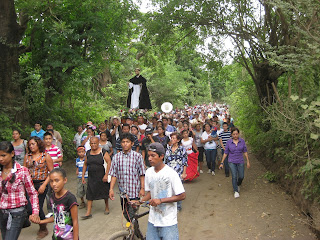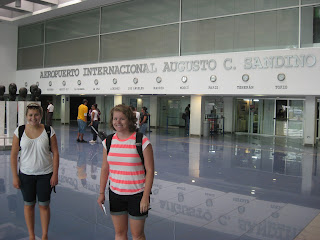Free lodging presented itself unexpectedly in the Nashville, Tennessee area and that was all the reason we needed to make a weekend of it. We stayed from the 15th-18th of August. I joked that this was Lydia's trip because we spent most of our time doing things she likes: touring caves and touring old houses with people in historical costumes. They are both pretty exciting, let me tell you.
It was funny because the first thing we did the morning after driving all the way to Nashville was drive even further back up to Kentucky. Our destination was Mammoth Cave National Park, the longest known cave system in the world at about 400 miles long. After visiting I felt like I had experienced something really cool. However since it's such a gigantic place, I felt a bit unsatisfied, like I hadn't really seen it because I'd only walked through one tiny part. I had the same feeling after visiting the Grand Canyon.
"The passageways of Mammoth Cave, the world's longest known cave system, cover hundreds of miles. They don't stretch in one straight line, but intersect and run above and below each other like a big but shallow platter of spaghetti."
I liked the pre-tour peptalk from our friendly park ranger. A lot of it was trying to scare the faint of heart. "There aren't any bathrooms in the cave, if you get hurt in the cave it will be hours until we can get you to a hospital", and so forth. There was a very narrow passage that we went through called Fat Man's Misery. I thought it was kind of scary that they didn't tell people exactly how fat was too fat. Getting stuck in the middle of a pitch black cave doesn't sound like good times.
"During the War of 1812 over 400,000 lbs. of calcium nitrate was extracted from Mammoth Cave.
Fresh water from the cave entrance was piped into the cave to wooden hoppers filled with cave earth. The water leached through this nitrate-rich dirt and filtered through split logs at the hopper base into a holding tank. A large upright pump forced this nitrate solution up to a higher tank then fed through another set of pipes to the entrance. On the surface, the solution was processed into salt-petre which was a major ingredient in manufacturing black gunpowder for the war."
Later that night we checked out a little Nashville nightlife. We had no choice but to explore Broadway, where the honky tonks were all rocking out. We found a nice one towards the end of the street that wasn't too packed. This was probably the best free bar entertainment that I've ever experienced. We both thought it was funny how many packs of girls there were in the area. Every bachelorette and birthday party from miles around seemed to congregate on this one street.
The next day we continued our "whatever Lydia wants" theme and headed out to Franklin, Tennessee to see the Carnton Plantation and the really nice little town nearby.
Our first stop was Puckett's Grocery & Restaurant. It had a great atmosphere and the food was fantastic.
The Carnton Plantation's main claim to fame is the role that it played in the Battle of Franklin. The building was very close to the fighting and was used as a field hospital. Blood stains are still visible in the floorboards from all of the amputations that took place. I feel like the battle's context was so well explained by our guide that it made me realize how interesting the Civil War was and how very little I know about it.
"McGavok Confederate Cemetery
In the spring of 1866, Col. John McGavock, seeing the deteriorating condition of the Confederate graves on the Franklin battlefield, set aside two acres of Carnton Plantation as the nation's largest private Confederate cemetery. The dead were reinterred here in order by states. In 1890, the wooden markers, which were inscribed with the names of the men, their companies and regiments, when known, were replaced with stone markers. Burial records were preserved by Col. McGavock's wife, the former Carrie Winder. She and her husband maintained the cemetery for the balance of their lives."
The last day of our trip Lydia proclaimed "let us see more old houses and people dressed in funny old clothes". So that's what we did.
Belle Meade doesn't have any gruesome history, but it was an interesting place nonetheless. This plantation was used to breed racing horses.
Both plantations were very cool and worth their respective visits. One of my few complaints was the cost. Carnton admission was $15 and Belle Meade $16 per person, meaning the two of us spent $62 on old house tours. It felt a bit extreme.
The long road home passed through scenic Paducah, Kentucky.
This was a cool levee-looking structure right next to the river.







































































